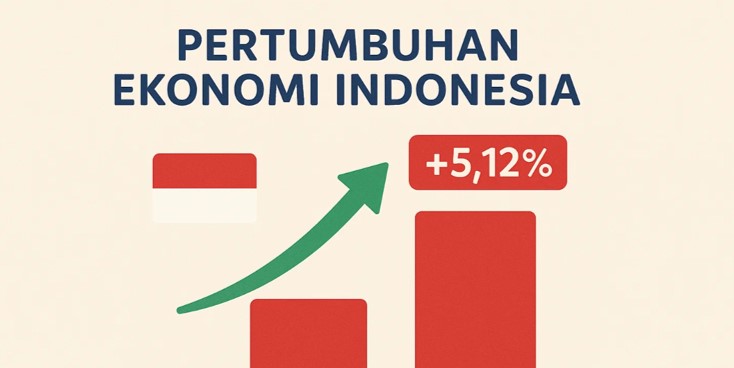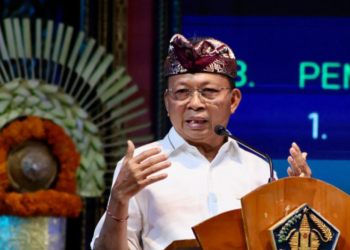Jakarta, Indonesia Sentinel — Central Statistics Agency (BPS) released its report on the economic growth of Indonesia in the second quarter of 2025. Indonesia’s economy grew 5.12% year-on-year, supported by strong household consumption and gross fixed capital formation.
The report was revealed by deputy for national accounts and statistical analysis at BPS, Moh Edy Mahmud during press conference in Jakarta, on Tuesday (August 5).
“Indonesia’s economy grew 5.12% in the second quarter of 2025 compared with the same period last year,” Edy said, as reported by Antara. He added that the figures grew 4.04% compared to the first quarter on a quarter-to-quarter basis.
BPS recorded that, at current prices, second-quarter gross domestic product (GDP) reached 5.95 quadrillion rupiah ($376 billion), while GDP at constant prices stood at 3.39 quadrillion rupiah.
In terms of the component, household consumption was the largest contributor to GDP, accounting for 54.25% of output, Edy said. The sector added 2.64 percentage points to the overall 5.12% national growth.
Spending rose as demand for essential goods increased, fueled by higher mobility during school holidays and major religious celebrations. “Demand for food and prepared meals climbed due to tourism activities during religious holidays and school breaks,” he said.
Gross fixed capital formation was the second-largest contributor to GDP after household consumption. The increase was supported by strong investment activity, particularly in the construction sector.
BPS noted that this sector accounting for 27.83% of output and adding 2.06 percentage points to the overall national growth
Read Also:
Indonesia’s West Java Records 3.65 Million People Living in Poverty
Furthermore, exports and imports recorded the fastest growth among GDP components, expanding 10.67% and 11.65% respectively. Edy said export growth was driven by higher non-oil and gas shipments and a surge in foreign tourist arrivals, while imports rose on increased demand for capital goods, raw materials and intermediate goods, both in value and volume.
By region, economic growth in the second quarter of 2025 was still dominated by provinces on Java Island, which contributed 56.94% to national GDP.
(Raidi/Agung)


























